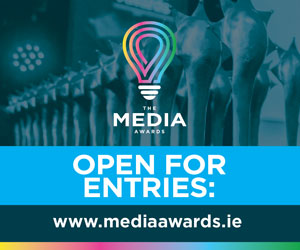
 Colum Harmon, marketing director, PML Group with this week’s Out \ Look on Out of Home
Colum Harmon, marketing director, PML Group with this week’s Out \ Look on Out of Home
OOH media continues to perform strongly across key business metrics for brands and advertisers. According to the combined findings of over 1,000 OOH campaigns researched in 2024, PML Group estimates that the overall effectiveness of the medium grew by 5% last year.
Independent research by Ipsos B&A, conducted on behalf of PML Group, assesses the effectiveness of OOH advertising through key metrics like recall, call to action, message understanding, and creative relevance. In 2023, these factors combined to deliver an average uplift of 8%. Building on this success, 2024 saw an additional 5% increase in effectiveness. With per-campaign panel numbers and investment levels largely consistent with 2023, the key to these improvements lies in the context in which ads are delivered and the creative’s ability to cut through.
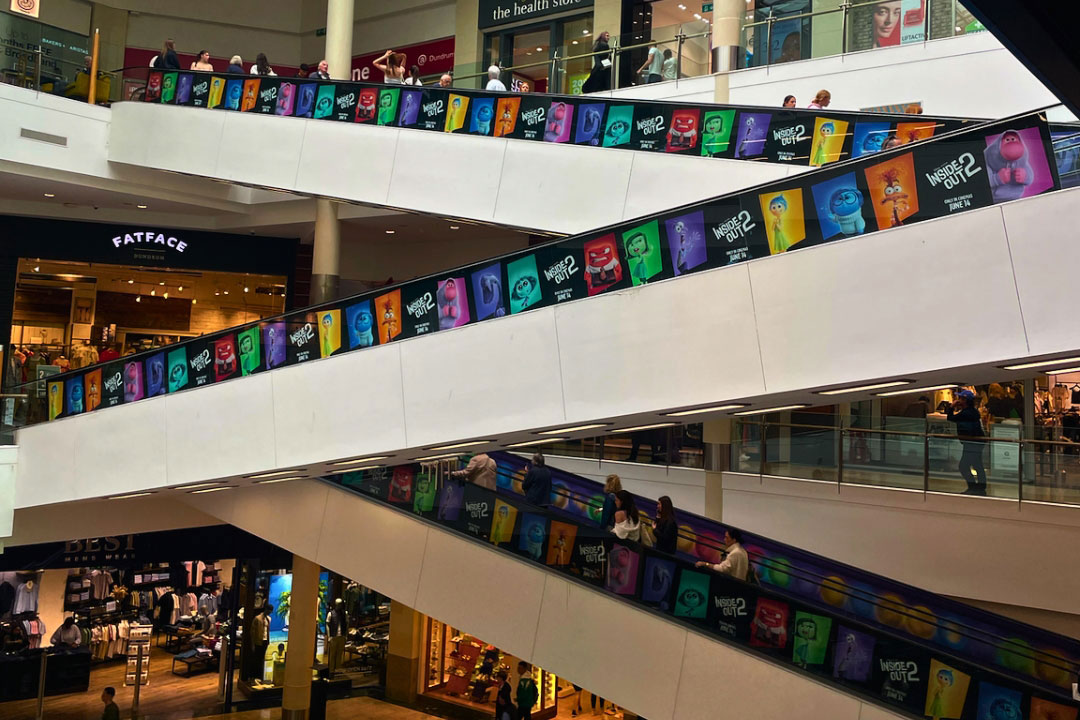
OOH is a pure advertising channel without editorial content or noise surrounding it, which makes its success dependent on a mix of the right formats, precise audience targeting, and a creative message that resonates quickly. In 2024, public ratings for campaign design quality increased by 3%, while message understanding rose by 5%, and message relevance jumped by an impressive 9%. This highlights Outdoor’s ability to deliver tailored messages in the right context and the growing willingness of advertisers to adapt their strategies accordingly.
Simple yet effective tactics—like customising messages for retail or commuter audiences, leveraging Dynamic OOH based on weather, or highlighting specific locations—can add that extra layer of relevance. These factors not only boost message recall but also drive consumer responses, evident in the growth of call-to-action and attention statistics.
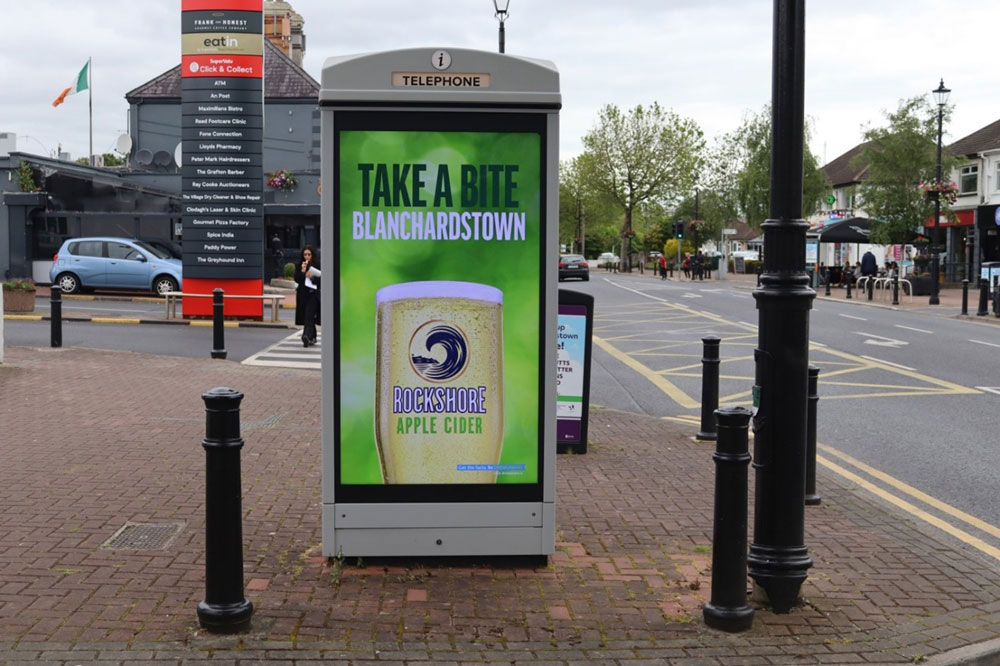
At PML Group, we believe OOH is “Measured for Attention.” Our commitment to measuring campaign performance continuously allows us to learn and improve. These independent findings demonstrate how OOH advertisers are unlocking greater value from the medium, with creative and media agencies using this data to optimise their OOH strategies and harness valuable consumer attention.
Later this month, we will announce the winners of the 2024 IMPACT Awards, celebrating the standout individual campaigns of the year. In the meantime, if you’d like more information about our IMPACT research programme, please don’t hesitate to reach out to our marketing team at info@pmlgroup.ie.
Cheez-It Snaps Up Lunchtime Attention with Dynamic OOH
With lunchtime cravings in mind, Cheez-It is activating a high-impact Outdoor campaign to spark impulse snacking decisions at key moments throughout the day. Planned by Carat and PML, the campaign leverages a mix of dynamic digital formats and high-impact classic OOH to maximise visibility and influence purchase consideration.
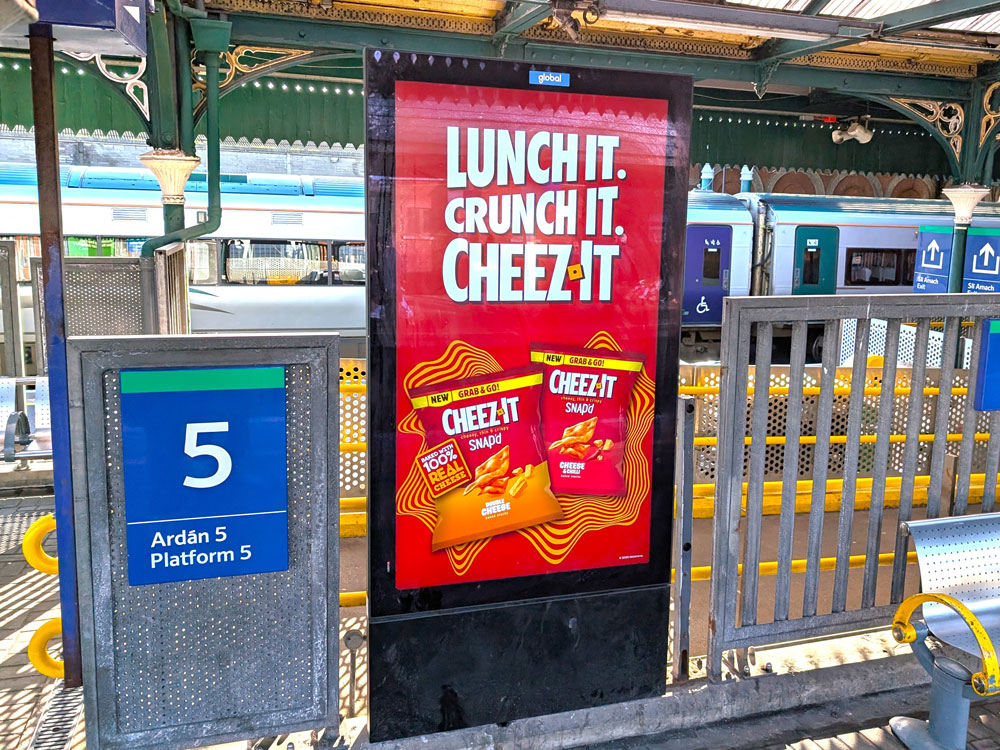
The brand’s dynamic digital activations are running across mall digital screens and commuter dPods in Dublin’s Connolly and Heuston stations ensuring the brand is mentally available when hunger strikes. The mall digital placements are positioned near Tesco and Dunnes Stores, placing Cheez-It within arm’s reach of consumers as they shop—reinforcing physical availability and nudging purchase decisions at the point of sale.
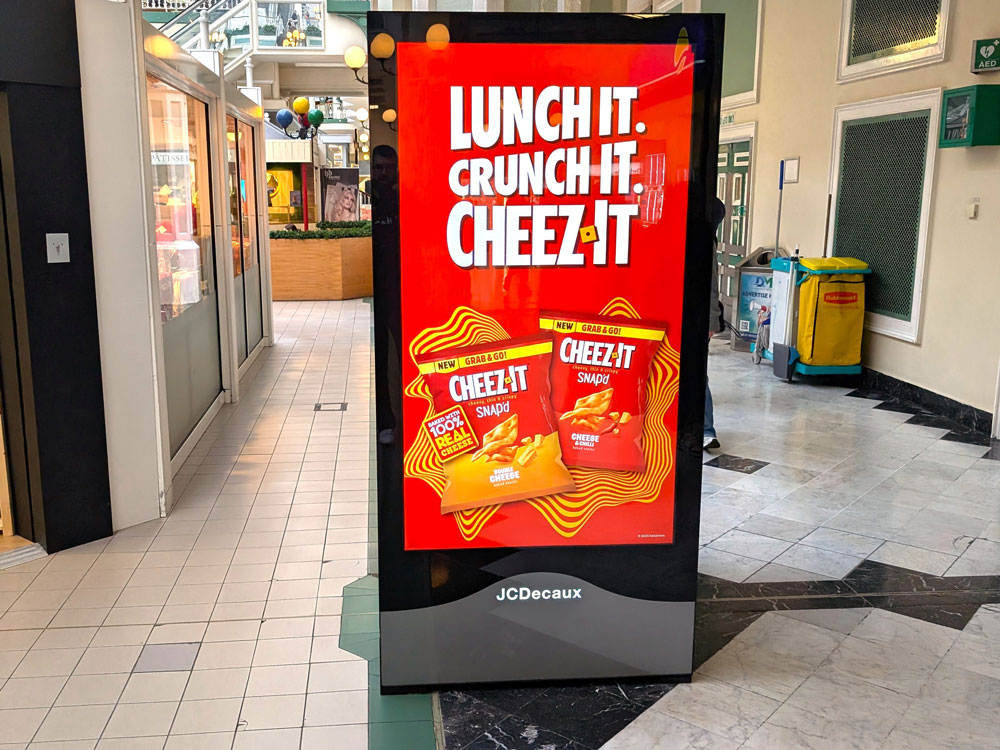
Going live at peak lunchtime, dynamic scheduling ensures Cheez-It captures attention when cravings hit hardest. Our IMPACT Attention research shows that contextually relevant OOH ads are 65% more likely to be noticed, with 61% of consumers stating that OOH influences their purchase decisions—a perfect fit for a snack brand aiming to disrupt the midday routine.
Beyond digital, Cheez-It’s presence extends to key roadside and transit environments with Supersides, 48 Sheets, and Bus Shelters. The creative leans into intrigue, featuring the playful tagline “Cheez-hit?” alongside wide-eyed visuals of the product pack.
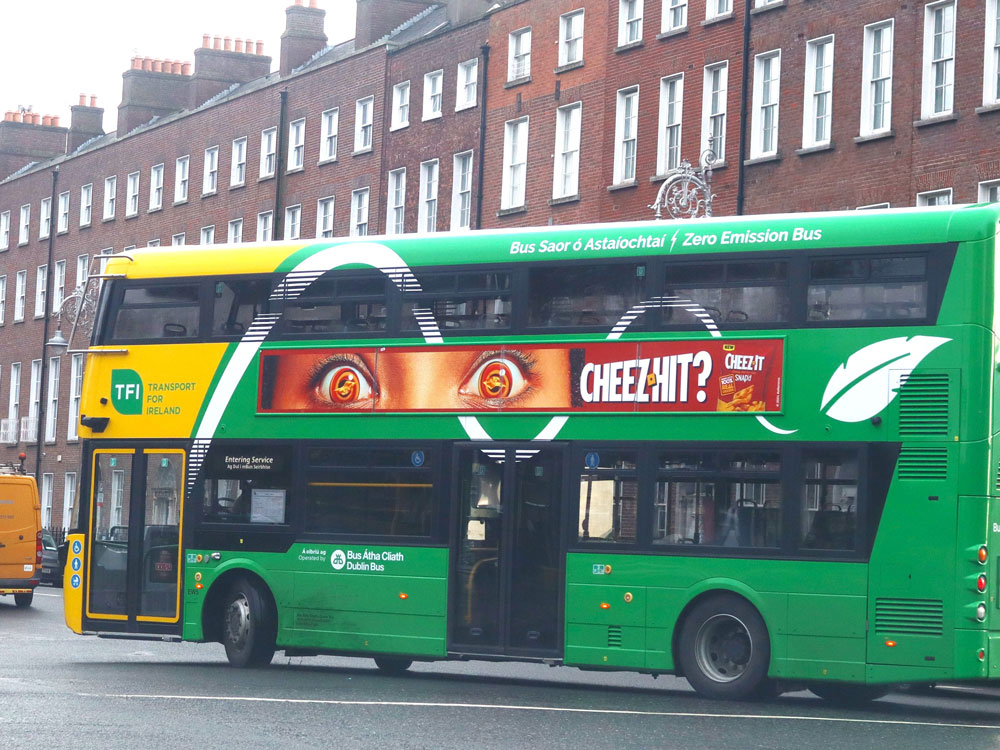
Large-format 48 Sheets reinforce brand salience, ensuring Cheez-It stays top of mind all day long. Their high visibility ensures the campaign remains effective beyond peak snacking hours, maintaining sustained brand recall. As commuters and motorists navigate the city these standout placements seamlessly integrate Cheez-It into daily routines, reinforcing familiarity at multiple touchpoints. Meanwhile the reach and frequency of Supersides provide continuous exposure, ensuring the brand remains visible across different locations and maximising recall over time.
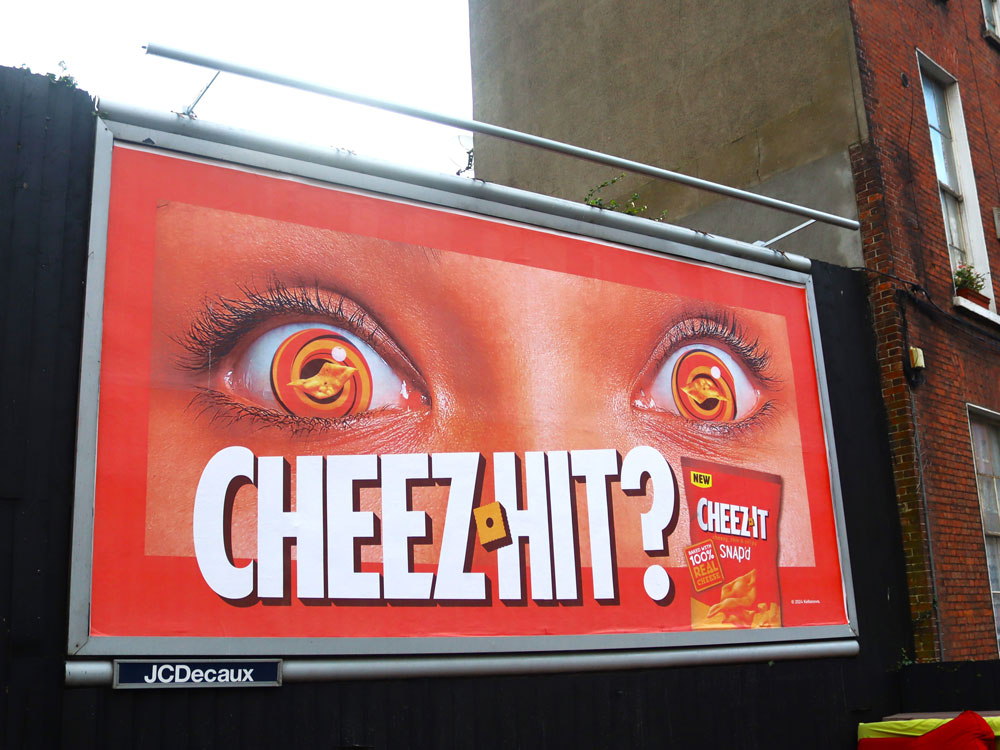
By blending contextual relevance with high-impact formats, the campaign turns lunchtime cravings into action—demonstrating OOH’s power to drive both immediate impact and lasting brand engagement. Targeting busy commuters in Connolly and Heuston stations ensures Cheez-It is top of mind when hunger strikes, while the mall digital activations near grocery retailers provide a final nudge to purchase.
Dublin was the 2nd slowest moving city in Europe in 2024
Across 2024, Ireland’s capital was found to be the 2nd slowest-moving city centre in Europe after London, based on actual average travel times.
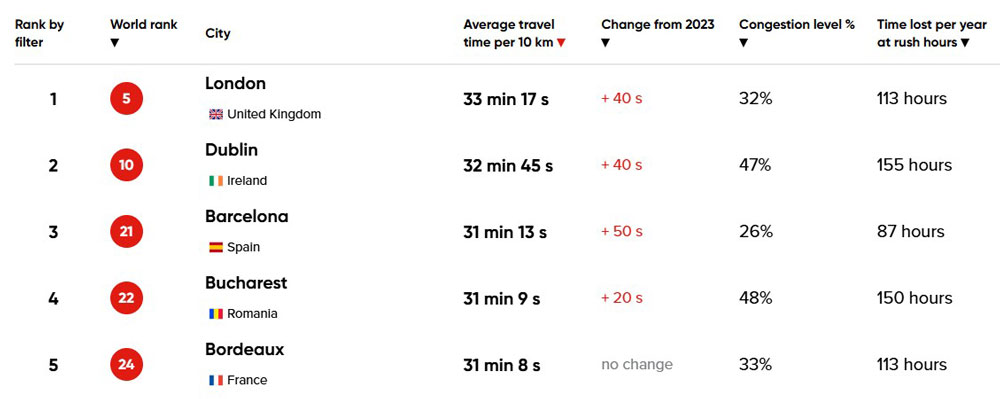
Dublin drivers lose an average 42 minutes per day due to congested rush hour traffic. This is the second highest figure globally behind Lima in Peru.
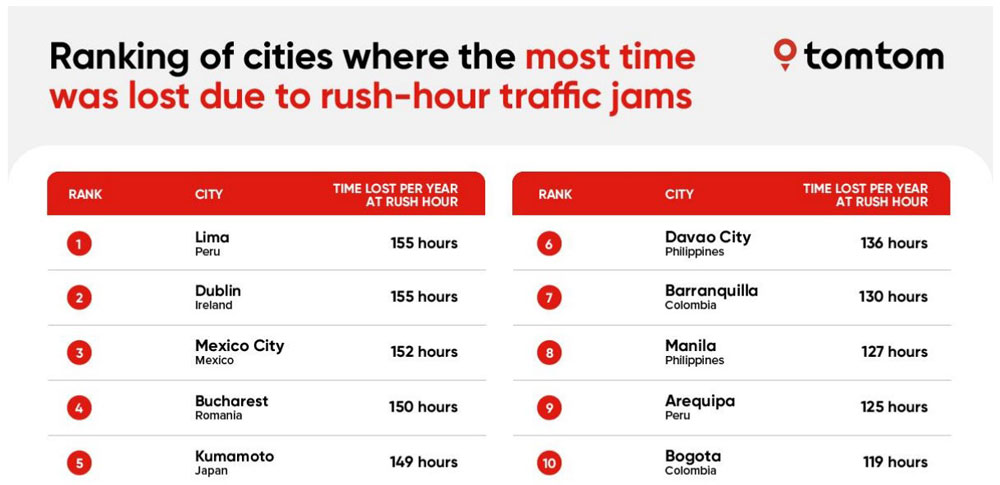
The 14th edition of the TomTom Traffic Index, an annual report that provides an overview of global traffic trends. It features 500 cities across 62 countries on 6 continents and uses unified metrics to rank these cities based on their average travel time as well as congestion levels.
The study found that it takes the average driver, on the average day, over 32 minutes to drive 10 km in Dublin. That’s an average speed of 18.3 kmph. Compared to when traffic is free flowing, it equates to a delay of about 8 minutes per trip.
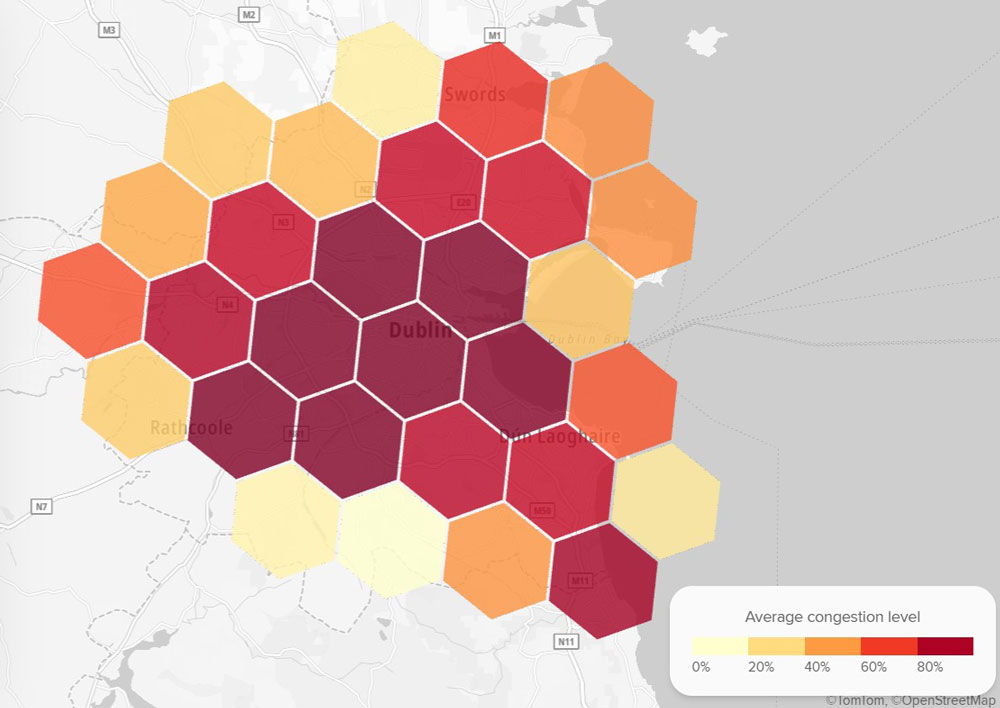
Time lost to traffic in rush hours
The story gets worse during rush hours. The average 10 km journey during the morning rush hour takes over 41 minutes. In the evening, it takes 42 and a half minutes.
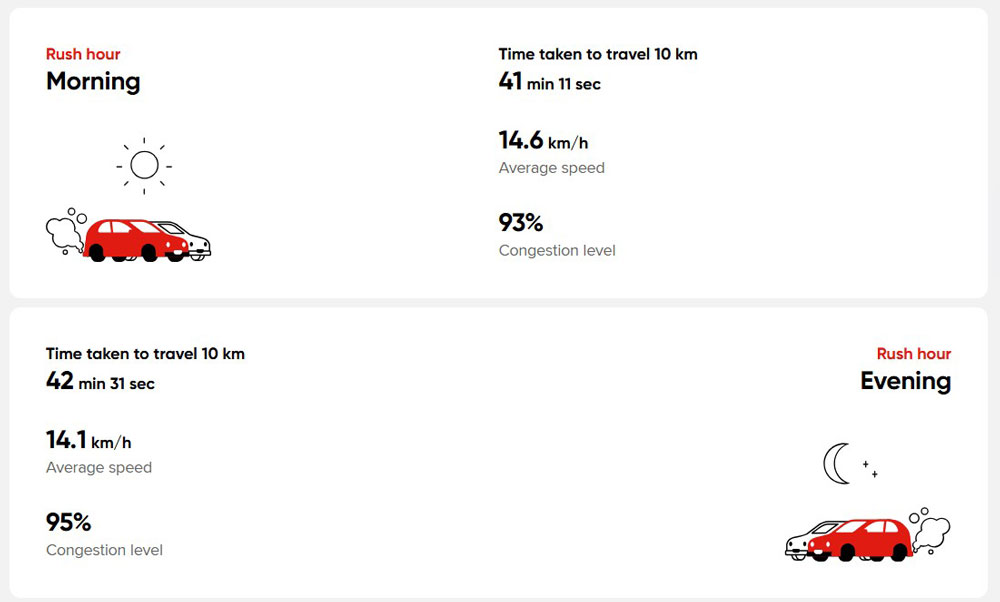
Implications for OOH
Longer and slower commutes increase dwell time exposure to OOH formats from billboards to buses, to bus shelters. Prolonged exposure increases attention and assimilation of ad messages. Levels of engagement and cognitive processing an audience allocates to a given advertisement are enhanced.





















